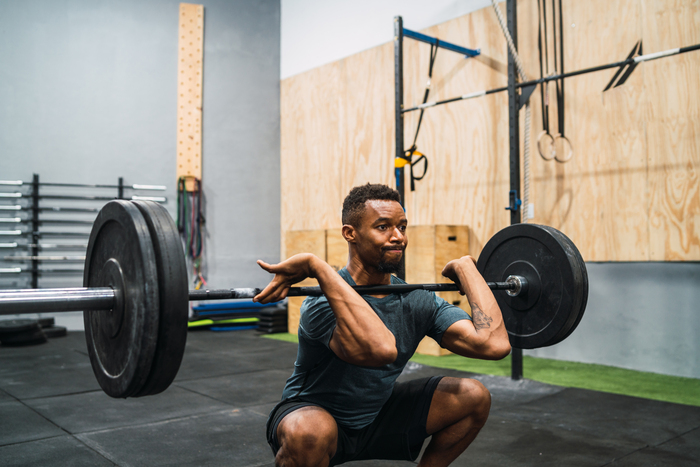A set of exercises with dumbbells in the style of a cross-functional workout is performed with high intensity. Be sure to do a quality warm-up to bring the muscles into combat readiness. Warm muscles and joints are less at risk of injury and are also more efficiently included in the cross-functional work process. Finishing the training, do a good stretch to quickly return the muscles to rest.

How to do cross-functional workouts at home?
There are several cross-functional workout options depending on your fitness level.
Beginners. Perform each exercise under the scheme: 30 seconds of work, and 15 seconds of rest. One cross-functional circle of 10 activities lasts 7.5 minutes. Repeat 2-3 such circles. Rest between circles for 2-2.5 minutes. At first, beginners can train without dumbbells or take light water bottles instead (1-1.5 l).
Advanced athletes. Perform each exercise under the scheme: 45 seconds of work and 15 seconds of rest. One circle of 10 exercises lasts 10 minutes. Repeat 3-4 such circles. Rest between circles for 1.5-2 minutes. Experts don’t recommend performing more than 4 circles.
It is more efficient to work towards increasing the weight of the dumbbells (for relief and muscles) or increasing the speed of the exercise (for fat burning or developing endurance and explosive strength).
All levels. Perform the activities indicated in the description of the number of repetitions. Rest between exercises for 15-20 seconds. Advanced ones can do the exercises without rest. Rest between circles for 1.5-2 minutes. Repeat activities in 2 circles (beginners) and 3-4 circles (advanced).
In cross-functional workouts, your goal is to complete as many reps as possible in a given amount of time. You can even increase the number of repetitions with each subsequent circle.
Do this cross-functional workout at home 2-3 times a week if you train for 30-40 minutes.
5 Moderate Intensity Exercises
Before training, try to choose an average weight for yourself. Since the cross-functional work is intensive, dumbbells that are too heavy for training will not work. We advise having a set of equipment of different weights to regulate the load.
Squat with dumbbell press
Make a squat to form a 90-degree angle with the floor. When returning to the starting phase, simultaneously lift the weight above your head. Do a second squat after you return the equipment back to the shoulders. Make sure that the foot is thoroughly pressed to the floor. The knees do not go forward to the toe during squats.
How much to do: 15 reps.
Classic push-ups
Focus on lying down so that your hands are slightly wider than your shoulders. Do not spread your elbows, trying to point them back. Move down until your chest is near the floor. In the lower phase, you can make a small delay to fix the position and push back with force.
How much to do: 15 reps.
Jumping with a dumbbell
Take the projectile by the sides and lift it near the chest. On the exhale, jump so that the legs are wider than the shoulders and the projectile is raised above the head. While inhaling, return to the starting phase, jumping with identical strength. The main nuance of the exercise is to catch the average pace.
How much to do: 30 reps.
Lifting dumbbells
Stand up straight after placing the projectile on the floor exactly between the feet. Bend over to grab the bar with one hand, then forcefully lift it over your head, pause a little, and gently lower it into place. Perform the exercise alternately on both sides. The movement is made at an average pace, so in no case do not throw projectiles, achieving maximum efficiency.
How much to do: 10 reps per side (20 total).
Burpee with hand touching shoulders
Being in lying (plank on hands), alternately move your hands towards the head on the opposite side (left palm on the right shoulder and vice versa). Next, perform a forward jump in plank, straighten up to full height and jump again, stretching your arms above your head. After that, retake the plank on your hands and do the next repetition.
How much to do: 10 reps.